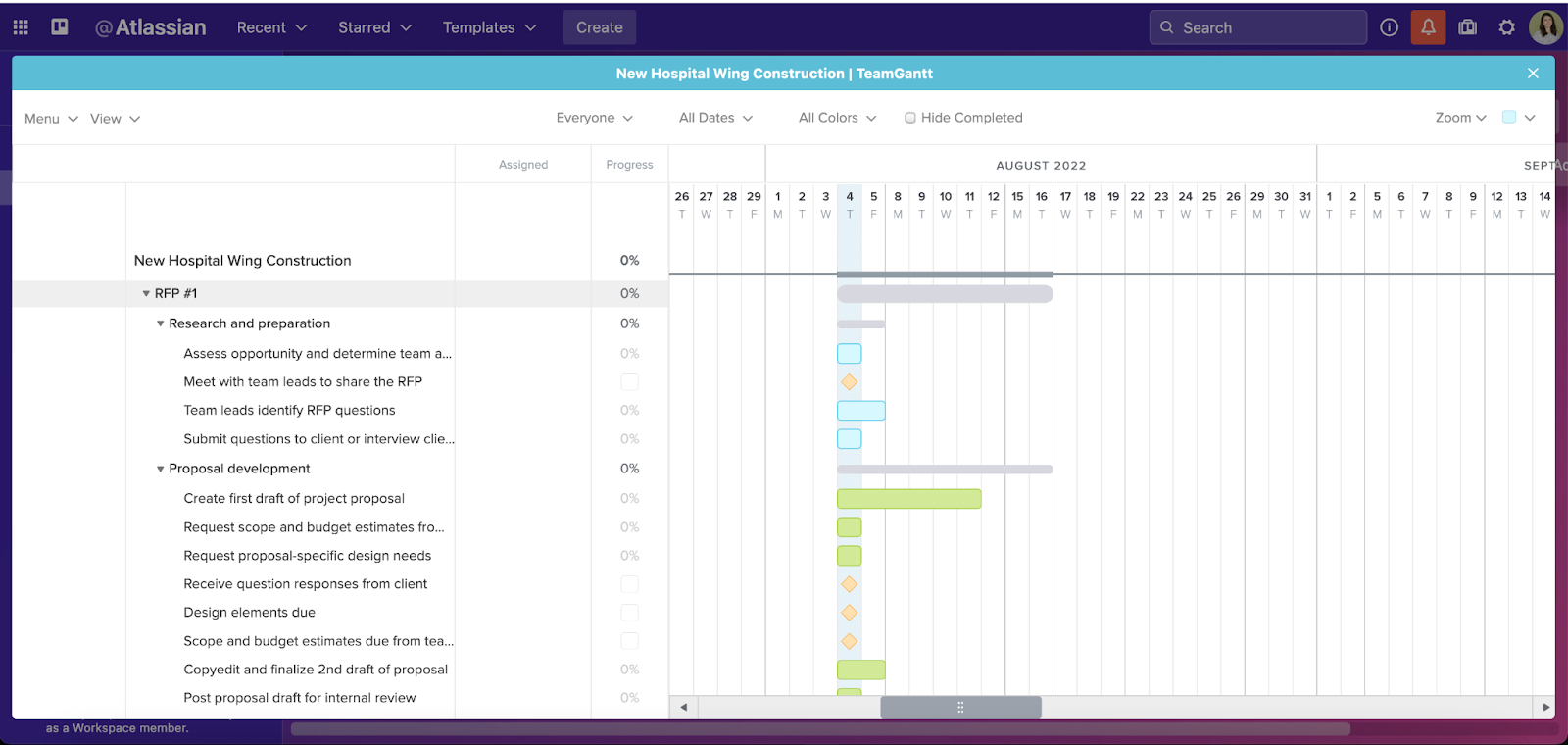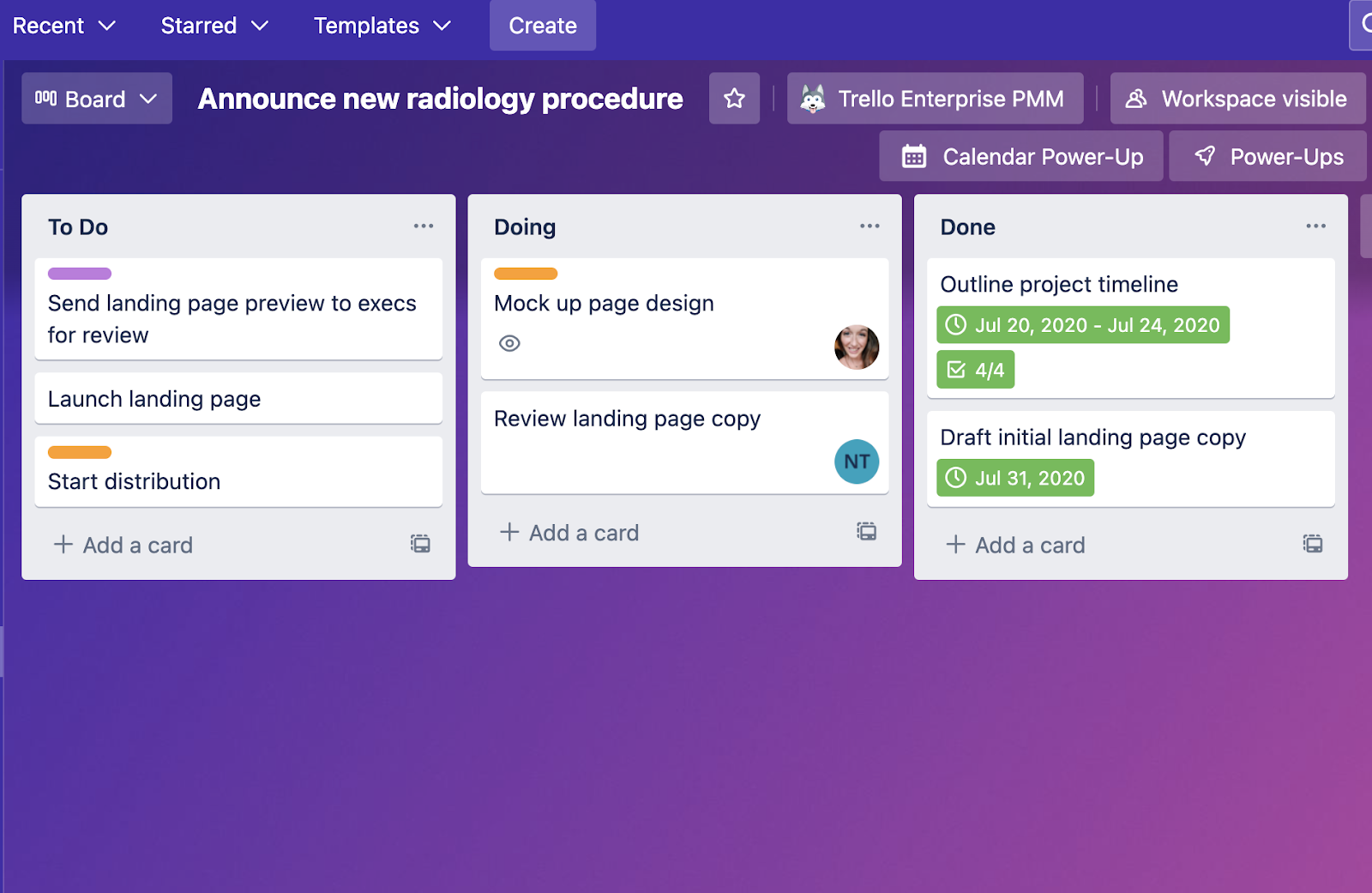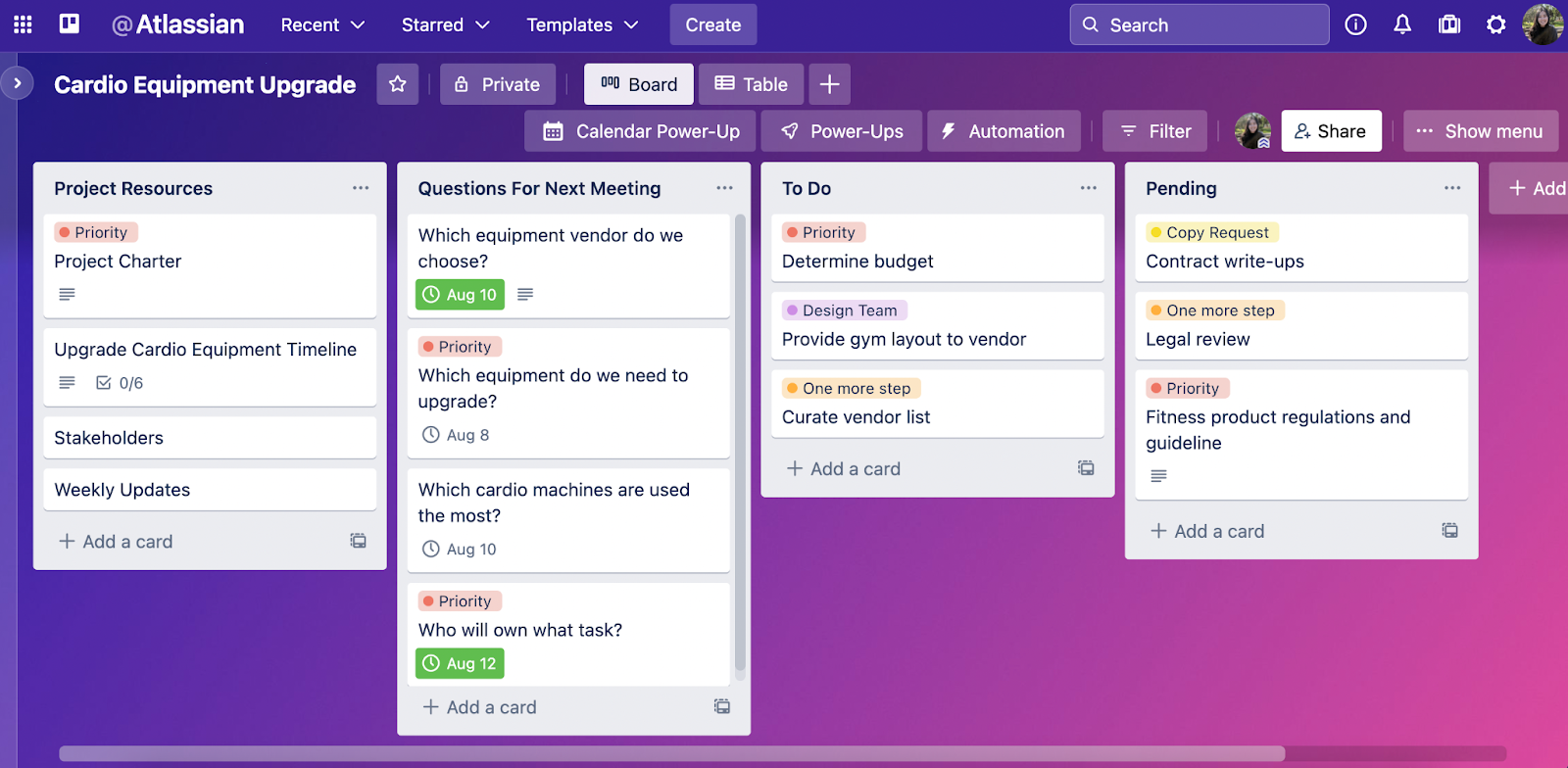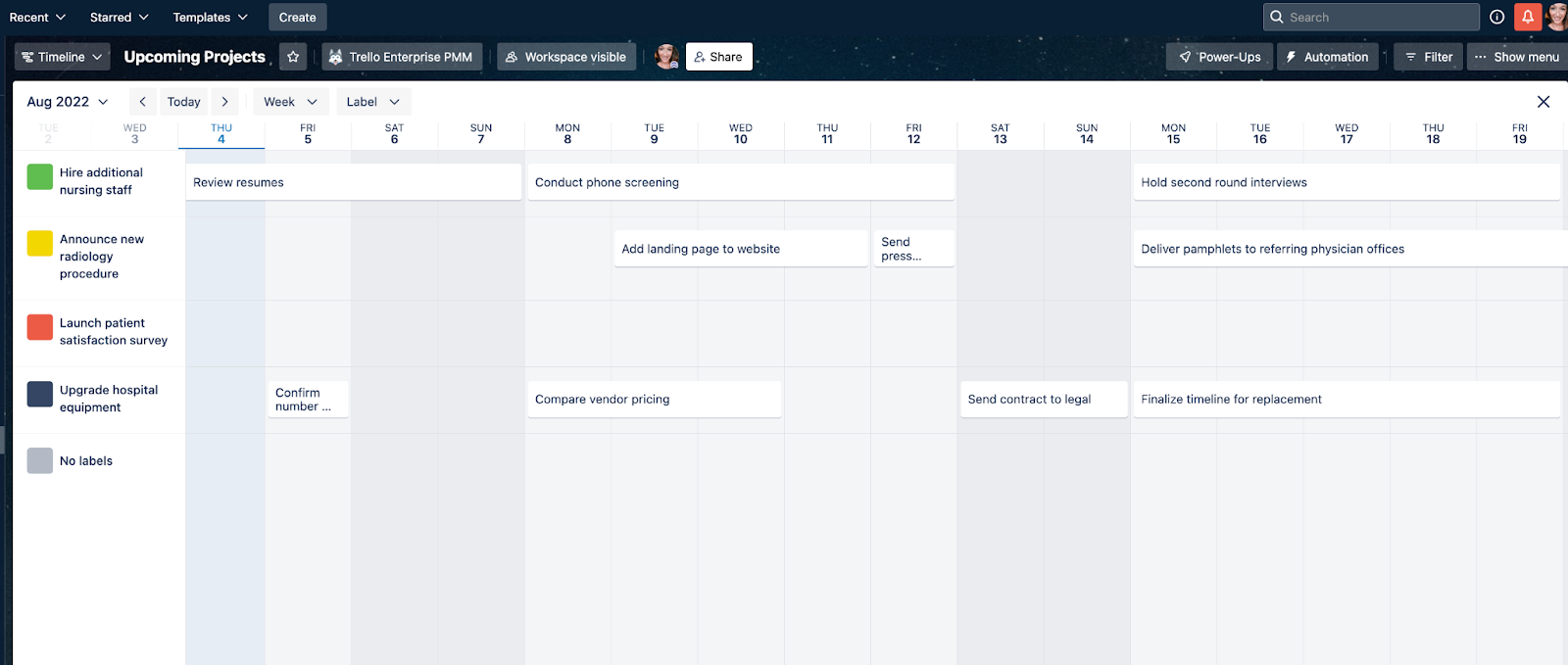Today’s companies in the health and wellness space are plagued by rising costs, staffing issues, and increasingly strict regulation that makes it difficult to keep the lights on—much less thrive. As a result, healthcare teams are under incredible pressure to maximize resources, reduce overhead, and adopt effective project management systems.
The ability to plan, manage, and successfully execute projects has a direct impact on your org’s reputation, bottom line, and employee morale. But the stakes are even higher for healthcare project management, where projects and initiatives directly impact patient care.
Great healthcare project management doesn’t happen by chance. It requires a deep understanding of what you want to accomplish, a framework for how to execute that vision, and the right tools to guide you through to completion. Here’s how to get started.
What is healthcare project management?
Healthcare project management refers to the organization, planning, and execution of a particular project and its resources. Through project management, healthcare organizations take a project—like building a new hospital wing—from initial inception all the way to completion to achieve desired outcomes.
The four primary stages of healthcare project management:
Stage 1 – Initiation
During this phase, stakeholders review potential projects and evaluate goals, resources, and expected outcomes to determine which are worth approving—and which should be tabled. This is a critical stage for healthcare organizations, which are often working with limited budgets or resources and need to prioritize projects with the highest potential impact.
For large hospitals, that might be trying to invest in new facility construction depending on changes in patients served or new treatments or technologies developed. For fitness studios, it might be trying to determine which equipment to order or new staff to hire.
Stage 2 – Planning
Once a project has been approved, it moves into the planning phase. In this stage, the project manager creates a detailed project plan that outlines logistical elements like the schedule, tasks, budget, project contributors, and contributor responsibilities.
Additional items to consider at this point are potential challenges that may arise and how the success of the project will be measured. The goal of this phase is to obtain all the decisions necessary to move on to the execution phase, such as conducting a facility needs assessment with key hospital administration and staff, or obtaining total costs of new gym equipment.
Stage 3 – Execution
The execution phase is where the rubber meets the road. In this phase, project contributors carry out their designated tasks and work toward completion of the project. It’s vital that teams effectively track, measure, and communicate their progress throughout the entire execution phase.
This allows the project manager to identify roadblocks, reallocate resources, and make adjustments to keep everything on track. For example, ensuring that the hospital wing construction documents are submitted to the proper regulatory channels for building permits or placing orders to gym equipment manufacturers.
Stage 4 – Conclusion
Once the project has been completed, it’s time to wrap everything up. In the conclusion phase, the project manager provides stakeholders with a summary of how everything went, along with any key deliverables and results. This is a great time to reflect on what went well, which areas could be improved for future projects, and how each project contributor performed.
Applying this stage to the previous hospital construction example mentioned above, this conclusion phase would consist of final inspection and gaining input from patients or staff who use the new facility and equipment daily after opening.
Each project management stage builds off the previous one and is critical to your project’s overall success. By dedicating time to all four stages rather than focusing solely on one or two, healthcare practices can increase the likelihood of a positive project outcome.
Methodologies for healthcare project management
Every healthcare company has projects, but the way they manage them can vary dramatically. Some orgs prefer a more flexible approach to project management, while others require a system that’s more structured. That’s where project management methodologies come in.
A project management methodology is a guiding framework that determines how you, as a practice, plan and execute your projects. Most healthcare companies use one of three methodologies to steer their efforts: the waterfall methodology, the agile methodology, or the hybrid methodology.
Waterfall project management
The waterfall project management methodology is a sequential, linear model in which projects are broken down into smaller, defined phases. Each phase is mapped out in extraordinary detail with tasks, deliverables, and deadlines and must be completed before the next phase can begin.
With the waterfall method, the entire project is visually laid out from start to finish (often in a Gantt chart like the one featured below). This makes it easy for stakeholders to gauge the full scope of the project, see who’s involved, and get a realistic idea of how long each phase is expected to take.

Use Gantt charts for waterfall project management
It’s a rigid system, but it works well for teams that have large, complex projects with multiple stakeholders involved—like those who work in public health.
Agile project management
The agile project management methodology is an iterative model that’s centered around speed, communication, and adaptability. Teams complete various phases of the project in parallel rather than taking a sequential approach to execution, relying on collaboration and communication to keep everything on track.
Let’s say your practice just started offering a new interventional radiology procedure and needed to add a landing page to your hospital’s website so you can increase awareness. Under an agile approach, your webmaster could start mocking up the page design while a radiologist reviews the final copy instead of having to wait to get started. When that copy does get approved, the page is already designed and ready to launch.
Agile projects are often laid out in a Kanban-style board, with emphasis placed on task status versus deadline/assignee. Everything that needs to be completed lives in a “To Do” section, and tasks that have been started are denoted as “Doing” or “Done” so everyone knows what’s in progress.

Use Kanban boards for agile project management
It’s a much more flexible approach to project management—one that benefits teams at healthcare startups or smaller practices where there’s pressure to knock projects out quickly.
Hybrid project management
The hybrid project management methodology balances the flexibility and speed of the agile method with the big-picture planning of the waterfall method.
Let’s say your team wants to upgrade to a new electronic medical records (EMRs) system by the end of Q4. You could incorporate waterfall elements during the initiation and planning phases of the project, creating a detailed roadmap that outlines the steps, deadlines, and resources necessary for completion. This higher-level overview is often necessary to get leadership buy-in and can help keep teams on track when the project gets rolling.
Once the project moves into the execution and conclusion phases, however, you’ll want to take a more agile approach that enables teams to tackle various phases of the project simultaneously.
In this scenario, there’s an outline of what needs to be accomplished, but teams still have the flexibility to adjust timelines, re-prioritize items, and adapt to changes as needed. This more flexible approach can keep projects from getting blocked and help teams meet (or beat) their deadlines.
The impact of great project management
Orgs with effective project management processes in place can benefit from improved patient outcomes, better systems, and lower costs.
When done correctly, healthcare project management can help organizations improve a number of areas, including:
- Internal processes. With a defined project management system in place, you can standardize how teams approach every aspect of a project—from initiation all the way to completion. This ensures consistency and makes it easier to identify (and improve) parts of the process where projects consistently break down.
- Organizational planning. To truly excel at project management, an emphasis on planning is required. Project contributors, managers, and stakeholders must train themselves to think with a big picture in mind and get comfortable mapping out a project step by step. That planning mindset carries over into every other aspect of the organization—from scheduling to ordering important medical supplies —and can positively impact the quality of care.
- Stakeholder relationships. Orgs can strengthen relationships with their board of directors, volunteers, and donors by involving them in the project approval phase, providing regular updates about project status, and communicating wins. With a system in place to track project completion and success, it’s also easy to demonstrate value by quantifying the number of changes your company has made—and their impact.
Healthcare companies without a defined approach to project management may find themselves battling inefficiency, burgeoning costs, and high litigation/regulation risk.
5 best practices for healthcare project management
There’s no one-size-fits-all approach to healthcare project management. The way you choose to approach project management can vary based on your organization’s structure, your preferred methodology, the type of projects you manage, and other factors.
With that being said, there are a few simple steps you can take to improve project management within your healthcare practice.
1. Invest in a secure project management tool
Many companies rely on a project management tool to help them organize, track, and manage their projects. For companies in the healthcare industry, it’s not enough to find a project management solution with flashy features. You’ll need a secure tool (like Trello Enterprise) that enables your teams to manage projects more efficiently and protects their data.
Here are security features to look for when choosing your healthcare project management tool:
- SOC2 compliance. This independent auditing procedure evaluates a tool’s ability to manage customer data in five key areas: availability, processing, security, confidentiality, and privacy. In short, it’s a strong indicator of whether or not that project management tool can protect your data. As a general rule of thumb, if it’s not SOC2 compliant, you probably shouldn’t use it.
- Login security. According to IBM’s Cost of a Data Breach report, compromised credentials were the top source of data breaches in 2021. It’s essential that whichever tool you select offers features that add an extra layer of security when employees log in, like single sign-on (SSO) and two-step verification (2SV).
- User management. On any given day employees can resign, move into a new role within the company, or transition departments. And as these changes occur, you need to be able to quickly adapt employees’ permissions. Trello offers automated user management through Atlassian Guard and automatically updates employee permissions based on changes within your employee directory.
- File-sharing restrictions. Your project management tool will house all your project files, attachments, and resources—but you may not want everyone to be able to see them. Be sure the tool you select offers file-sharing restrictions so that only need-to-know users can access sensitive project documents. For example, Trello uses authenticated attachments to ensure that no unauthorized users can access files shared on your project cards or board.
2. Pay proper attention to planning
Insufficient planning is a huge contributor to project failure. Before you start working through specific tasks, take the time to create a project charter that defines your project’s goals, resources, key deliverables, and metrics for success. If you’re upgrading the cardio equipment at your fitness center, explain why the project is important, outline who should be involved, and specify any expectations you have regarding deadlines, communication, etc.
This planning document will be critical in ensuring that the entire team (and your stakeholders) are aligned on the goals and logistics of the project.
Once you’ve finalized your project charter, make sure it’s easily accessible to all the project contributors. If you’re using Trello for project management, you can add the charter directly to the resources list on your project board so team members can refer back to it.

Attach a project charter to your Resource board for easy access
3. Prioritize your projects
Many healthcare companies have to balance limited resources and staff shortages when managing projects. In order to maximize your team’s efforts, it’s important to differentiate projects that need to be completed ASAP from those that aren’t as pressing. You can do that by assigning priority levels to each project—and encouraging contributors to focus on high-priority projects.
You can choose to prioritize projects based on deadline, urgency (e.g., a project that’s not time-sensitive but is important to stakeholders), or the perceived impact of the project outcomes. Whichever method you choose, you’ll need to find ways to clearly communicate priority levels to your project team.
If you opt for a deadline-based approach to project prioritization, Trello’s Timeline view is a great resource. Through the Timeline view, teams can visually track and manage multiple project timelines all in one place. This allows them to see which projects have approaching deadlines, visualize how tasks fit together, identify potential overlap issues, and adjust the tasks they need to prioritize accordingly.

Use Trello’s Timeline view to manage deadlines and prioritize projects
For teams that take a mixed-bag approach to project prioritization, labels make it easy to visually tag individual tasks with priority levels. You can designate project items as “High Priority,” “Medium Priority,” or “Low Priority,” and even create custom labels that note whether each task is “Urgent” or “Not Urgent.” This encourages contributors to focus their efforts on high-priority, high-urgency items over tasks that aren’t as pressing.

Use custom labels to indicate task priority and urgency
4. Make it easy to work together across departments
Sometimes projects are confined to individual teams, but more often than not, larger projects within your healthcare facility require contributions from employees in a number of departments. If those teams can’t collaborate with each other, important project information can get siloed within departments and cause delays.
Lean heavily on your project management tool to simplify the collaboration process and help everyone work together—regardless of department.
Trello enables cross-team collaboration by providing a centralized location where all project resources, updates, and deliverables can be accessed. Employees can easily check task statuses, request feedback from other contributors, and share files between departments.

Trello makes it easy for teams to collaborate on projects
Instead of each team working on their portion of the project as an independent unit, Trello enables them to work together through the same tool. This helps increase visibility and enables collaboration.
5. Remember that communication is critical
Effective communication is key to the success of any project—especially if your team has taken an agile approach to project management. At any given time, project contributors may need to collectively brainstorm solutions to a challenge, share updates with stakeholders, or communicate their needs to other team members. If they can’t, the entire project could break down.
Trello makes it easy for teams to enhance their communication—both internally and with external stakeholders. Employees can tag team members into conversations on various project cards and use the comment section to request resources, ask questions, or provide additional context about a task.
You can even use Power-Ups (i.e., integrations) to connect your org’s other communication tools (like Slack and email) to Trello. That way, instead of navigating out of the platform to send a project update to stakeholders, you can initiate those conversations directly within Trello

Master healthcare project management with Trello Enterprise
Whether you’re a large hospital, a small private practice, a biotech company, or a wellness provider, Trello makes it easy to plan, track, and manage projects of any size. Our platform is packed full of flexible features that support clinical operations and empower healthcare teams to save time, reduce overhead, and improve the way they work.
Health and wellness orgs across the globe use Trello to:
- Track procedures
- Manage equipment and inventory
- Improve vendor communications
- Streamline onboarding
- Connect healthcare teams across departments
- Collaborate on medical research and publications
- Balance staff workloads and organize schedules
Find out how you can do the same.
